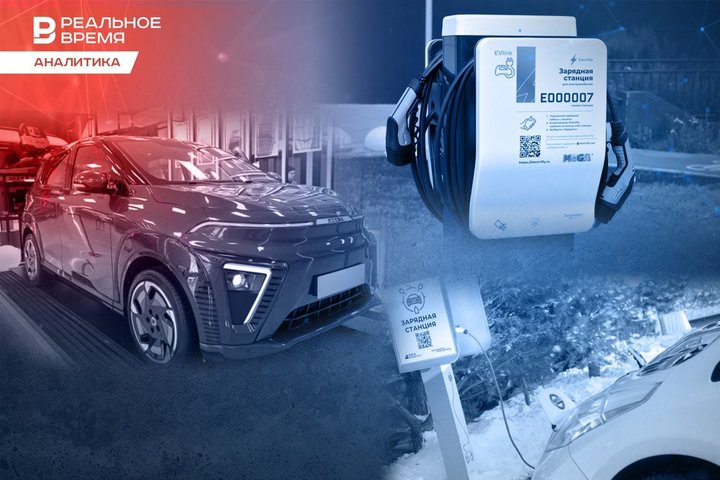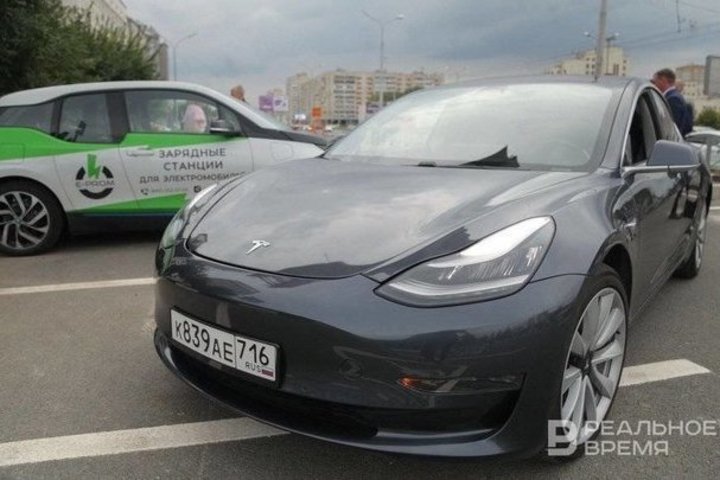Investors did not have enough cars: the infrastructure of electric charging stations grows faster than the electric car market
Who is to blame for the low occupancy rate of charging stations?

Electric vehicle owners are used to complaining about the lack of infrastructure for the development of their type of transport. But today the situation has changed dramatically — now the owners of charging stations are worried about their low occupancy rate and the growth of payback periods. Russia has made a big step towards the development of electric mobility: in Tatarstan alone, the number of electric cars has increased 31 times since 2018, and hybrids — 4 times, experts calculated. However, there are still not enough electric cars — the built charging stations are idle. Read about if the entry of Atom into the market will change the situation, how many electric charging station operators there are in Tatarstan today and where the residents of the republic charge their cars in the report of the analytical staff of Realnoe Vremya.
Tatarstan is among the top five regions in terms of the number of charging stations
As part of the session The Future of Electric Mobility in Russia: You Can’t Execute It, You Can’t Charge It, held in Saint Petersburg in April, Dmitry Matvievsky, CEO of IT Charge, compared Tatarstan with China in terms of the level of development of the charging infrastructure and the ratio of the number of charging stations to electric vehicles in the region.
According to the 2Сhargers service, there are 294 charging stations in Tatarstan today. The republic is among the top five regions in Russia in terms of the number of charging stations, second only to Moscow Region, Moscow, Krasnodar Krai, and St. Petersburg. The lion's share of charging stations (more than 2 thousand units) today are in the capital and the Moscow Region. Tatarstan still has room to grow to such a scale. Today, 12 charging station operators operate in the republic. The largest player in the market is the local Grid Company which has installed more than 150 stations and does not plan to stop there. NonStop, Punkt E, Touch, Electrify, Elecctro.Car, UnitCharge, RusHydro, Volt, Sitronics, ITCharge, YouCharge are also present on the Tatarstan market. Some of them currently have 1-3 stations.

On the one hand, such a variety of operators and the number of stations is a great reason to switch to an electric car, on the other hand, operators of electric charging stations in Russia are sounding the alarm: they are concerned about the low occupancy rate of electric charging stations due to the slow growth of the electric vehicle fleet. The Industry Association of Manufacturers and Operators of Electric Charging Stations (APOE) even asked the Ministry of Energy to allow the relocation of under-occupied stations without returning subsidies.
According to 2Сhargers analytics, the occupancy rate of charging station infrastructure in Russia today is really low on average: almost 12% at paid stations and 27% at free stations. The electric vehicle market in Russia is not growing as dynamically as expected. After a sharp increase in the recycling fee, sales of electric vehicles in January-February 2025, according to Avtostat, fell by 63%, and sales of hybrids dropped by 40%.
In addition, most electric vehicle owners (more than 59%), according to 2Сhargers surveys, have an electric vehicle charging point at home, and 35% of respondents charge their electric vehicle at home every day, 29.7% do this 1-2 times a week, 20.2% — 3-4 times a week.
In Tatarstan, the number of electric cars has increased more than 31 times since 2018

The share of passenger cars with the ability to use an electric motor in 2024 is 0.6% of the total number of passenger cars.

“The expansion of the network of electric charging stations in Tatarstan became a trigger for the further development of the electric vehicle market: people are no longer afraid to buy a car, now the consumer has seen that the infrastructure has been created, it is affordable, and they can travel safely,” the expert explains. In the future, each owner of an electric car will decide for themselves where to charge it — at a public paid station, at home or at the office, where today you can place your own charging station.
The global electric vehicle market continues to grow

China is still the world leader in electric vehicle sales. In 2024, 11 million electric vehicles were sold in the country, which is 40% more than in 2023. Sales are expected to continue to grow in 2025. Leading Chinese manufacturers such as BYD are actively expanding their export programs, planning to supply about 800 thousand cars to Europe and other regions. “This confirms the ability of Chinese brands to compete with Western manufacturers, despite political tensions and high tariffs,” Akimova notes.

The European electric car market faces a number of challenges. In 2024, about 3 million electric cars were sold, up 15% compared to 2023. In the first quarter of 2025, sales in Europe grew by 22%, reaching 0.9 million units. “However, the introduction of tariffs on Chinese electric cars in the European Union led to an increase in the cost of cars by 35-45%, making it difficult for Chinese manufacturers such as BYD and NIO to compete,” she says.
In the US, the electric car market faces political uncertainty. About 2.5 million electric cars were sold in the country in 2024, and sales are expected to grow by 16% in 2025. “However, the political situation in the country, including the freezing of electric vehicle subsidies under Donald Trump’s policy and the increase in import tariffs, may slow down the development of the market,” she predicts.
One of the most important factors influencing this market is the growing popularity of hybrid cars. In 2024, 9 million plug-in hybrid cars were sold, which is 25% more than in 2023. In the first quarter of 2025, PHEV sales continued to grow, increasing by 29%. In some European countries, such as Sweden, hybrid cars account for more than 50% of total new car sales. “This confirms the high demand for hybrid cars, especially in regions with developing charging station infrastructure,” notes Tatyana Akimova.
In Russia, according to Automarketer, 2,945 new hybrid cars were sold in March 2025, which is 61% less than a year earlier. The result in March last year was the highest in the reporting 12 months and formed a high base. “Sales of ‘pure’ electric vehicles in the same period fell by 77% and decreased from 2615 to 594 units. In the first quarter of this year, the market for new hybrids fell year-on-year by 41% from 16,335 to 9663 units, and sales of electric vehicles decreased by 69%, from 6146 to 1877 cars.”